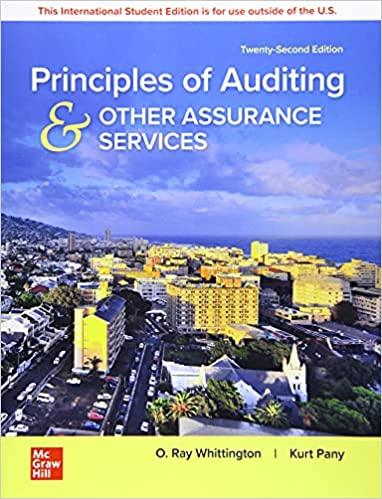Question
A. Terminology Match each item on the left with the most appropriate item on the right. 1. Ad hoc processes 2 Business rules 3. Consistent
A. Terminology Match each item on the left with the most appropriate item on the right.
1. "Ad hoc" processes 2 Business rules
3. Consistent project standards 4. Cost overrun
5. Discrete project standards.
6. Feasibility study
7. Improvement part of organizational culture
8. Modular programming code 9. Simulations
10. Statistical project control
11. Multiple choice questions.
a Tes(SDLC)
b. Risk of SDLC
c. Repeatable (CMM)
d. Optimized (CMM)
e. Managed (CMM)
f. Initiation/planning (SDLC)
g. Design (SDLC)
h. Defined (CMM)
i. Chaotic (CMM)
j. Build (SDLC)
1. As a future accounting professional, which phase of the SDLC are you least likely to
involved in?
a. Build
b. Requirements analysis
Operations/maintenance
d. Test
2. If a system does poorly during the testing phase of the SDLC, it may be due to issues in
1. Requirements analysis.
II. Design.
III. Build.
a. I and II only
b. II and III only
e. I and III only
I, II, and III
3. Which of the following is the best example of the "initiation/planning" stage of the SDLC? a. "We need to use XBRL to produce financial statements,"
b. "We should adopt Peachtree as our general ledger software."
c. "Let's compare PeopleSoft with SAP" d. "Our inventory controls are weak."
4. Which of the following statements is most true?
a. Failure of a new system is a bigger risk in direct cutover implementations than in paral Jel implementations.
h. Failure of a new system is a bigger risk in parallel implementations than in direct cutover implementations.
e. Smaller organizations should use parallel implementation more often than direct cutover
d. Larger organizations should use direct cutover implementation more often than parallel.
5. John plans to use the SDLC to develop a balanced scorecard for his department. Which stage of the capability maturity model is John's organization in?
a. Chaotic
b. Repeatable c. Managed
d. Cannot be determined from the information given
12.
Statement evaluation. Indicate whether each of the following statements is (i) always true, (ii) sometimes true, or (iii) never true. For those that are (ii) sometimes true, explain when the statement is true.
a. The systems development life cycle is the best way to develop new information systems.
b. The SDLC can never be used as a tool for managing business processes. c. Interviews with system users can be an important element of requirements analysis.
d. Results in the build stage of the SDLC may require an organization to revisit its requirements analysis.
e. Cost growth and schedule delays are risks associated with using the SDLC.
f. If the business processes in Department X are optimized, the business processes in Depart ment Y are also optimized. g. An organization can move from repeatable processes to managed processes without having
defined processes. h. An organization should move through the stages of the CMM sequentially.
i. An organization using activity-based management is at the managed stage of the CMM.
j. Publicly traded corporations are required to optimize their business processes for SOX and
the Foreign Corrupt Practices Act.
Step by Step Solution
There are 3 Steps involved in it
Step: 1

Get Instant Access to Expert-Tailored Solutions
See step-by-step solutions with expert insights and AI powered tools for academic success
Step: 2

Step: 3

Ace Your Homework with AI
Get the answers you need in no time with our AI-driven, step-by-step assistance
Get Started


